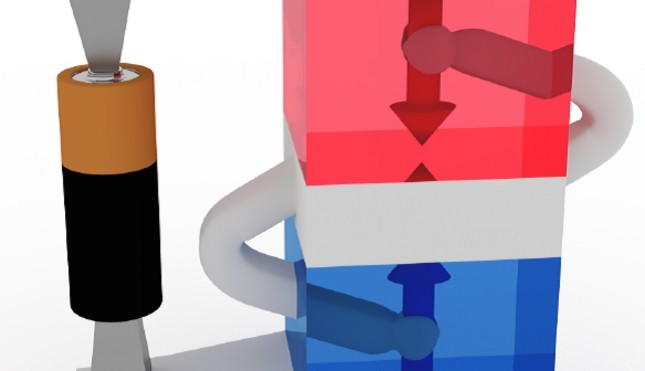Faster Memory Devices in the Future?
on

Storage capacity
These days we are accustomed to downloading videos, audio books to our mobile devices and storing enormous quantities of photos on our devices, any time and anywhere. The necessary storage capacity therefore grows quickly as well, and researchers are working hard on developing new data storage technologies. One possibility is the so-called ‘racetrack-memory’, an experimental technology where data is stored in nanowires, in oppositely magnetised layers that are called domains.The research team from TU/e, the Johannes Gutenberg University and the Peter Grunberg Institute in Germany, and the Daegu Gyeongbuk Institute of Science and Technology and the Sogang University in South Korea, has discovered how these racetrack devices can be improved considerably by using three-dimensional spin devices instead of individual domains.
Spin
Spin is a magnetic property of electrons and other fundamental particles, which can be compared to a built-in compass needle. Because of the spin, a magnetic moment is generated, which can be read, and subsequently can be used for data storage. Through the use of these spin structures, the memory storage becomes considerably faster and more data can be stored.Interaction
The researchers were able to demonstrate a previously unknown interaction that occurs between two magnetic layers with a neutral, non-magnetic layer in between. Normally the spins in one layer would be parallel or anti-parallel compared to the spins in the other layer. But it turns out that the spins were perpendicular to each other.With this breakthrough, three-dimensional spin structures can be designed, which in the long term can lead to new magnetic storage devices. The demonstrated interaction is currently not strong enough for practical applications, but the research continues.
Joint effort
The project was started in 2014 in the research group Physics of Nanostructures by Dr. Dong-Soo Han, former Post-Doc researcher at the TU/e, in collaboration with Prof. Henk Swagten.
The materials that were used, were provided by the NanoAccess research lab at the TU/e, and subsequently processed into magnetic layers. The discovered interaction was explained theoretically by researchers at the German Peter Grunberg Institute, while the Johannes Gutenberg University researched different combinations of multi-layer materials.
Source: TU Eindhoven


Discussion (0 comments)